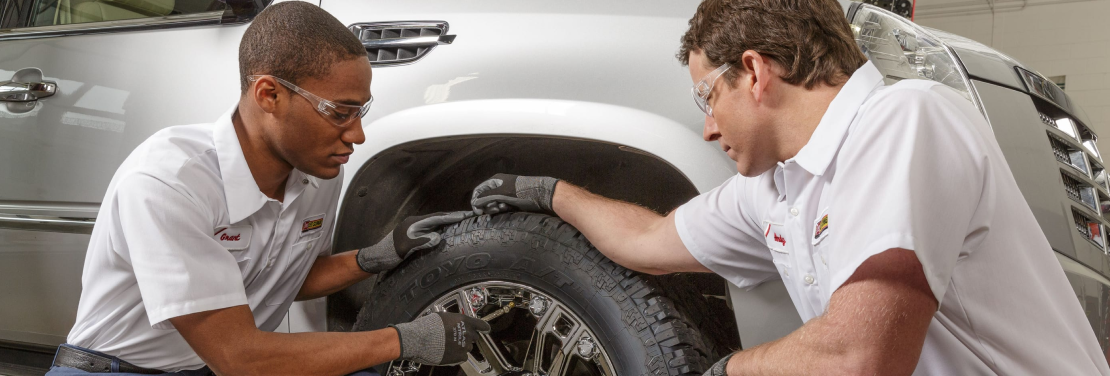Save Big with Mopar Tire Service Specials in Morris: Limited Time Uses
Save Big with Mopar Tire Service Specials in Morris: Limited Time Uses
Blog Article
Tire Service: Recognizing Tire Pressure Surveillance Equipments
Understanding Tire Stress Monitoring Equipments (TPMS) is an essential element of maintaining optimum automobile efficiency and safety on the roadway. With advancements in auto technology, TPMS has actually come to be a standard attribute in contemporary automobiles, giving real-time information on tire pressure degrees. Digging deeper right into the intricacies of TPMS, one can uncover the numerous components that compose this system and the significance of each in guaranteeing accurate tracking. From direct to indirect TPMS systems, the landscape of tire stress tracking varies, each with its one-of-a-kind set of considerations and benefits. Stay tuned to untangle the intricacies of TPMS, from upkeep pointers to the obvious advantages of maintaining your tires correctly pumped up. mopar tire service specials.

Importance of TPMS
The significance of Tire Pressure Surveillance Equipments (TPMS) hinges on their ability to enhance vehicle security and performance via real-time monitoring of tire pressure levels. Keeping the right tire pressure is crucial for guaranteeing optimal handling, braking, and general safety and security of a vehicle. TPMS supplies chauffeurs with instant responses on any overinflated or underinflated tires, allowing for timely modifications to be made.
Components of TPMS
Making up various important aspects, a Tire Pressure Surveillance System (TPMS) functions as an advanced safety and security attribute in modern automobiles. The main elements of a TPMS consist of sensing units, a control component, and a caution indicator. Sensors are normally situated in the tire shutoff stem or connected to the wheel assembly, where they determine tire pressure and transfer information to the control component. If it detects dramatically reduced stress in any of the tires, the control module procedures this information and triggers a caution. The caution indication, often a sign on the dashboard, informs the driver to examine the affected tire or tires. Some advanced TPMS models also present the real tire pressure analyses for every tire, offering vehicle drivers with real-time info to guarantee ideal tire performance and safety and security. By keeping track of tire stress continually, TPMS aids avoid accidents, reduces tire wear, and boosts fuel performance, making it a critical element for vehicle safety and security and performance.
Kinds of TPMS

On the other hand, indirect TPMS relies upon the vehicle's wheel speed sensors to keep an eye on tire stress. This system spots underinflation by comparing the rotational speeds of the wheels. Indirect TPMS is less expensive than straight TPMS, as it uses existing sensing units within the lorry.
While direct TPMS offers much more precise analyses, indirect TPMS is simpler in layout and usually calls for less maintenance. Both systems have their benefits and constraints, and the selection in between them frequently depends upon aspects such as cost, vehicle make, and Clicking Here individual choice. Recognizing the distinctions in between these two types of TPMS can help vehicle owners make educated choices pertaining to tire upkeep and safety and security.
TPMS Upkeep Tips
Reliable upkeep of TPMS is vital for making sure optimum performance and security of your automobile. Frequently checking the TPMS sensing units for any kind of damage or deterioration is crucial. Make certain that the sensing units are complimentary and clean from particles that can hinder their functioning. Furthermore, it is suggested to check the sensing unit batteries occasionally and replace them as needed to ensure exact readings. Conduct routine checks on the tire pressure degrees and compare them with the TPMS readings to guarantee they correspond. Rectify the system following the maker's guidelines if there are any type of disparities. During tire turning or substitute, make sure that the TPMS parts are dealt with meticulously to avoid any kind of potential damage. Last but not least, if the TPMS cautioning light brightens on the dashboard, attend to the problem quickly by inspecting the tire stress and the total system for any mistakes. By adhering to these upkeep ideas, you can prolong the lifespan of your TPMS and enhance the safety and security of your driving experience.
Benefits of Appropriate Tire Pressure
Preserving appropriate tire pressure, as click for more emphasized in TPMS Maintenance Tips, is important for enjoying the countless benefits associated with optimal tire pressure degrees. Furthermore, proper tire stress ensures even tire wear, extending the life expectancy of the tires and promoting more secure driving conditions. In final thought, the advantages of correct tire stress go beyond just tire long life; they include improved fuel performance, improved safety and security, far better vehicle performance, and overall driving convenience.
Conclusion
In final thought, comprehending tire pressure surveillance systems (TPMS) is crucial for maintaining optimum tire stress and guaranteeing vehicle safety and security. By identifying the relevance of TPMS, recognizing with its elements, recognizing the different types readily available, adhering to correct maintenance pointers, and recognizing the advantages of preserving proper tire stress, chauffeurs can enhance their driving experience and prolong the lifespan of their tires. Correct tire stress is crucial to efficient and risk-free automobile visit this web-site procedure.

Report this page